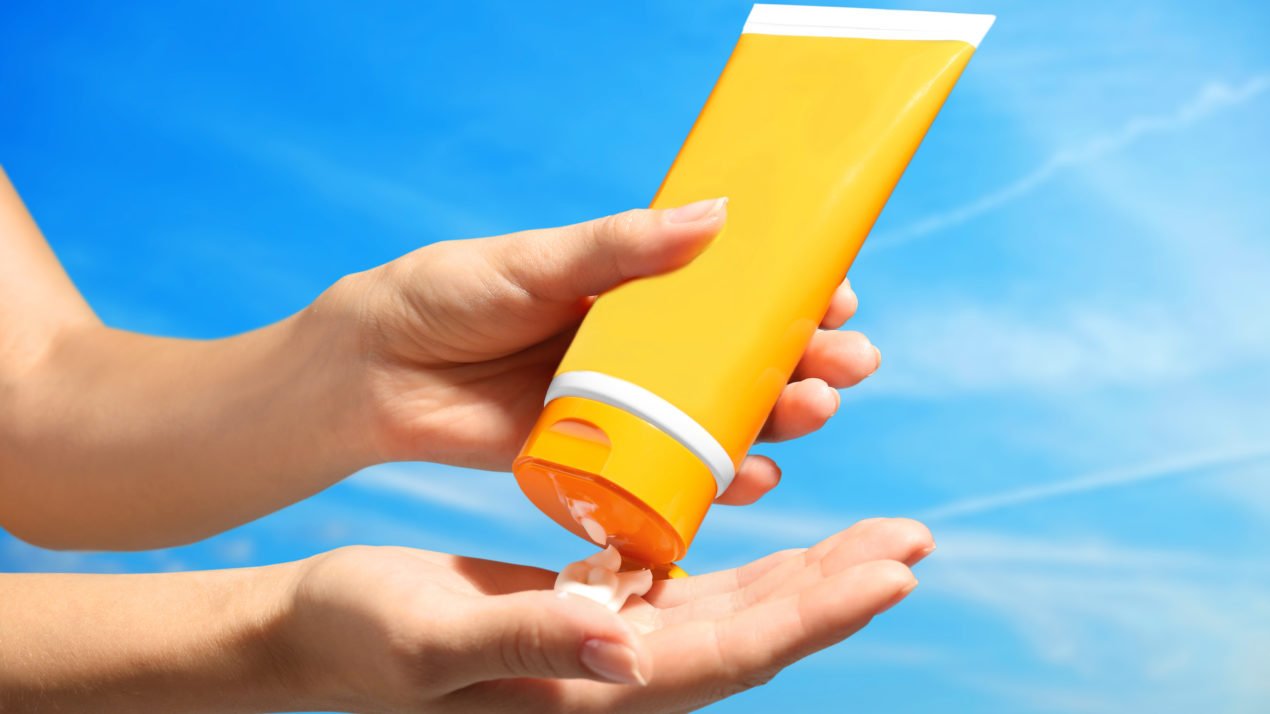
Even though it is often forgotten, sun safety is a very important issue when it comes to outdoor work or activities. Farmers have a significantly high occupational sun exposure, but knowing how to properly protect yourself can help prevent sunburn or even worse, skin cancer. Melissa Ploeckelman, outreach specialist at the National Farm Medicine Center shares some tips to help stay safe in the sun and why thinking about it is so important to your health.
Using sunscreen is a simple, yet very effective way to help protect your skin from the harmful UV rays of the sun. Best practice is to re-apply sunscreen throughout the day to be most safe. Most sunscreens only are effective for about three to five hours, and if you’re sweating it is even less. “Keeping a bottle of sunscreen in the tractor, right there in the machine shop, in the milk house, wherever you’re working,” Ploeckelman says is a good idea, “so you can re-apply throughout the day.” Make sure to put a good amount on as well to be well covered. Remember that the sun is at its strongest point between about noon and 5:00 pm. Your clothing can also help protect your skin as well. Wearing sun-safe shirts and hats can make a big difference, and long sleeves can protect your arms, while a hat with a four inch brim all the way around are the most useful.
If we don’t protect ourselves from the sun, not only can we get a sunburn, but it can also lead to developing skin cancer. One in five Americans will develop skin cancer within their lifetime, and farmers are at an even higher risk than that. Melanoma is the most deadly form of skin cancer, but if it is caught early it is highly treatable. However, if it is not taken care of, that cancer can spread to other parts of your body. So how do we know when we need to get our skin checked out? Ploeckelman shares the ABCDE’s of detecting melanoma.
You need to visit a dermatologist and have your skin checked out if:
- If a mole or skin spot is Asymmetrical
- If the Border of the spot, if it is irregular, scalloped or poorly defined
- If the Color of the spot varies, you see dark spots within it or if it is odd colored
- If the Diameter of the spot is any larger than 6 mm, or the diameter of a pencil eraser
- If the spot is Evolving or changing at all
“Once your skin is burned, the damage is done,” says Ploeckelman. Although, there are some ways to reduce any pain or prevent any further damage. The use of aloe vera, as well as washing your skin can both help to cool and stop the burn. Do not take a cold shower as it can shock your body, but a cool one can help.
Even on the overcast days that may not be as sunny, UV rays can still break through the clouds. Keeping sun safety on your mind at all times is important. Talk to your local dermatologist with any questions or concerns regarding the topic. The Upper Midwest Agricultural Safety & Health center also has published the 5 S’s of sun safety. Slip on a shirt, Slop on sunscreen, Slap on a hat, Slide on sunglasses and Seek shade. So, whether you are hard at work on the farm, doing yardwork at home or enjoying the summer weather on the weekend, keep these tips in mind to stay safe from the sun, as they might even save your life.

